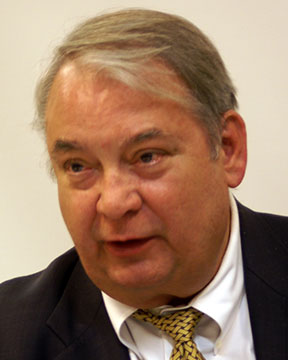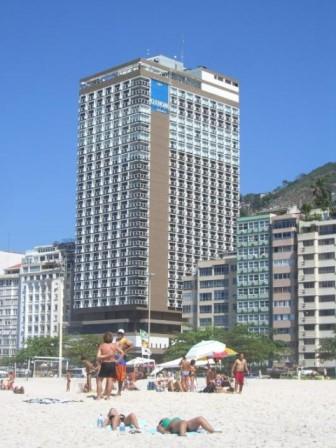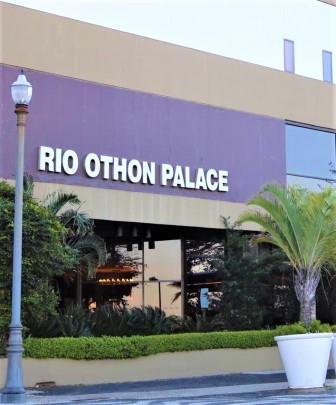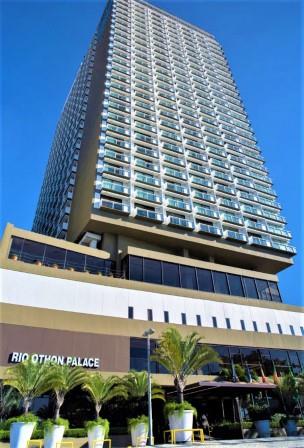ORALS
SESSION: MoltenMonPM2-R3
| Fehrmann International Symposium on Sustainable Molten Salt and Ionic Liquid Processing (6th Intl. Symp. on Sustainable Molten Salt and Ionic Liquid Processing) |
| Mon Nov, 5 2018 / Room: Bossa (150/3rd) | |
| Session Chairs: Tom Welton; Session Monitor: TBA |
15:55: [MoltenMonPM209] Keynote
Bulk Liquid Phase Processes Using Ionic Liquids — Success Factors and Recent Examples Peter
Wasserscheid1 ; Jakob
Albert
2 ;
1Friedrich-Alexander-Universitat, Erlangen, Germany;
2Institute for Chemical Reaction Engineering, Erlangen, Germany;
Paper Id: 289
[Abstract] This presentation highlights two recent developments of our group using ionic liquids as bulk liquid phase in industrially relevant, new process concepts. The first part of the presentation is dedicated to the role of an IL sorbent during the catalytic hydrogenation of CO<sub>2</sub> to methanol. This reaction is limited under stoichiometric conditions to around 20 % methanol yield by the equilibrium (75 bar total pressure, 250 °C). However, in the presence of an IL that absorbs both methanol and water under reaction conditions, significantly higher overall MeOH yields can be realized. This new application of IL sorbents has been demonstrated on a 5 L reactor scale with a continuous methanol production rate of more than 50 g per hour.
The second part of the presentation deals with a novel liquid-phase technology to convert lactic acid from fermentation to bio-acrylic acid. Acrylic acid is a major industrial chemical that is so far exclusively produced by a two-step oxidation process from propene. Selective conversion from biomass via lactic acid promises a strong reduction of the CO2 footprint, but also higher productivity under much milder conditions. The new process applies a bromide ionic liquid reaction medium to realize a nucleophile assisted dehydration process in hitherto unreached selectivity and yield.[2, 3]
References:
[1] J. Albert, M. Baldauf, J. Reichert, K. Stark, A. Tremel, P. Wasserscheid, WO 2017212016 A1 20171214.
[2] M. Kehrer, J. Mehler, N. Taccardi, J. Nagengast, J. Kadar, D. Collias, P. Dziezok, P. Wasserscheid, J. Albert, ChemSusChem 2018, 11(6), 1063-1072.
[3] J. Albert, P. Wasserscheid, N. Taccardi, J. Nagengast, M. Kehrer, J. Kadar, D. I. Collias, WO 2018022826 A1 20180201.
SESSION: EnergyTuePM2-R9
| 5th Intl. Symp. on Sustainable Energy Production: Fossil; Renewables; Nuclear; Waste handling , processing, and storage for all energy production technologies; Energy conservation |
| Tue Nov, 6 2018 / Room: Asian (60/3rd) | |
| Session Chairs: Peter Wasserscheid; Meng Tao; Session Monitor: TBA |
16:45: [EnergyTuePM211]
Recyclability of Heterogeneous Palladium Catalysts for the Dehydrogenation of Aqueous Formic Acid Axel
Kosider1 ; Patrick
Preuster
2 ; Andreas
Boesmann
1 ;
Peter
Wasserscheid1 ;
1Friedrich-Alexander-Universitat, Erlangen, Germany;
2Helmholtz Institute Erlangen-Nürnberg for Renewable Energy, Erlangen, Germany;
Paper Id: 237
[Abstract] Our limited supply of fossil fuels leads to an increasing demand for alternative energy sources. A promising and often considered option is hydrogen, because it is a renewable energy source. However, the storage and transportation of hydrogen is inconvenient, complex, and expensive. In addition to physical storage, hydrogen can be stored chemically so that these challenges are circumvented. One possibility is to use formic acid as a chemical hydrogen carrier, which has a hydrogen content of 4.4 wt.-% [1, 2]. Formic acid can be produced from biomass and it is decomposed to hydrogen and carbon dioxide with high selectivity [3]. Heterogeneous palladium catalysts decompose aqueous formic acid at ambient pressure and temperature, so that hydrogen generated from sustainable formic acid can be used as a renewable energy source [4]. However, during the dehydrogenation of formic acid, a drastic decrease in catalytic activity is observed and active centers of the catalyst become poisoned. For economic reasons, regenerating the deactivated material is crucial.
We investigate the decomposition of aqueous formic acid at room temperature, as well as deactivation and reactivation of the catalytic active material with commercial heterogeneous palladium catalysts. In batch-experiments, we determine the gas production rate, the gas composition, and the liquid phase composition in order to determine activity and selectivity of the catalysts. Furthermore, the catalyst is treated at different conditions after each experiment in order to examine the regeneration of the poisoned material.
Commercial palladium catalysts have high activity and selectivity for the decomposition of aqueous formic acid to hydrogen and carbon dioxide at room temperature and ambient pressure. Poisoning of the active material leads to a strong decrease in activity so that a regeneration is necessary. Post-treatment of the deactivated palladium shows a regeneration of the catalytic active material and facilitates recycling of the precious metal catalyst.
References:
[1] S. Enthaler, J. von Langermann, T. Schmidt, Energy Environ. Sci. 3 (2010), 1207-1217.\n[2] M. Yadav, Q. Xu, Energy Environ. Sci. 5 (2012), 9698-9725.\n[3] P. Preuster, J.Albert, Energy Technol. 6 (2018), 501-509.\n[4] M. Jeon, D. Han, K. Lee et al., International Journal of Hydrogen Energy 41 (2016), 15453-15461.



















